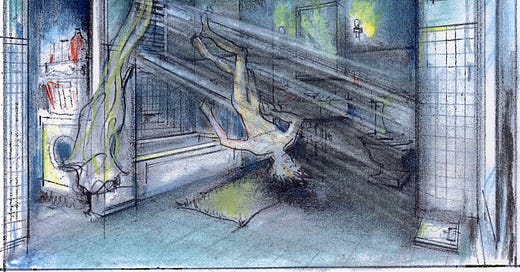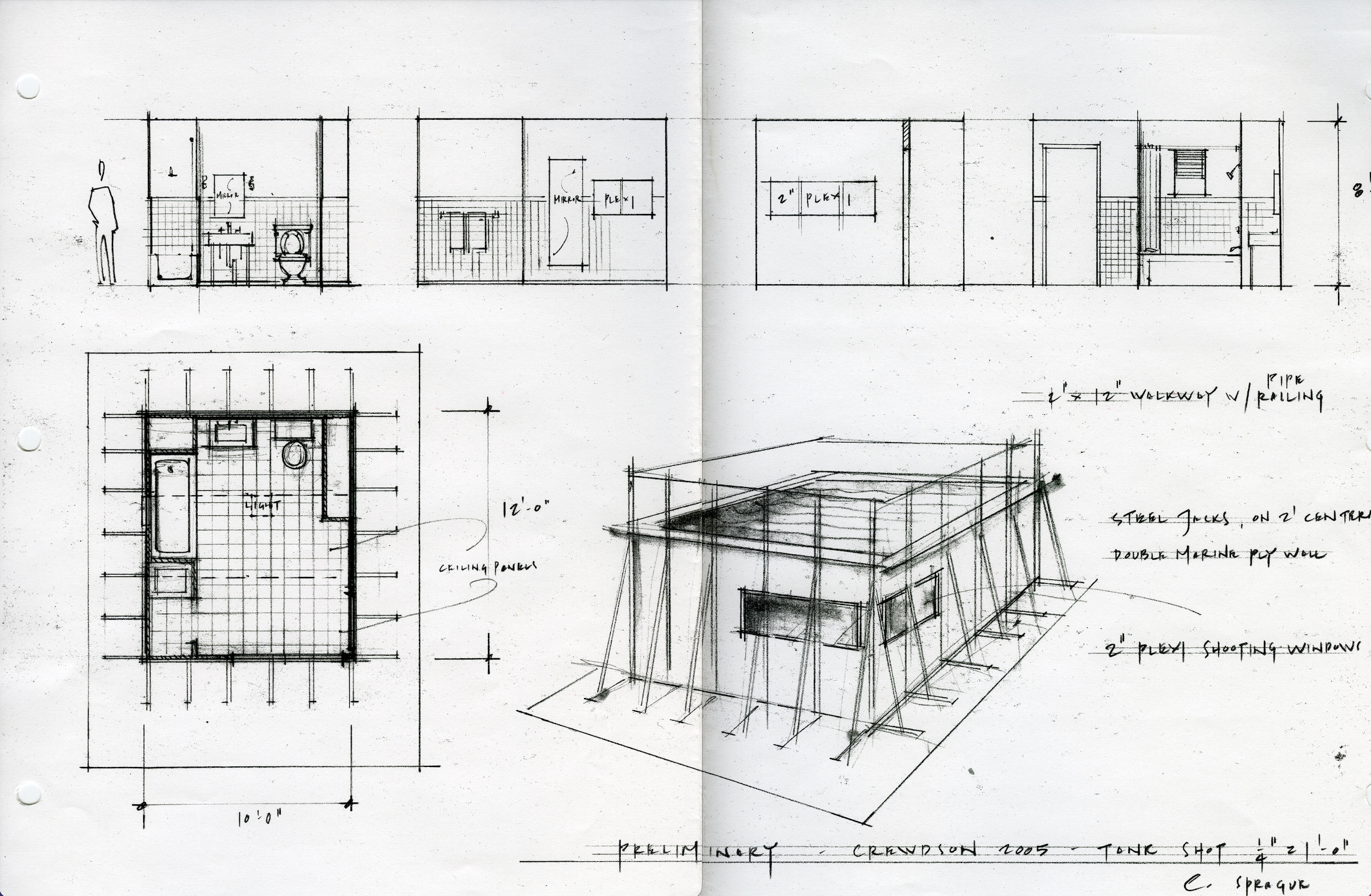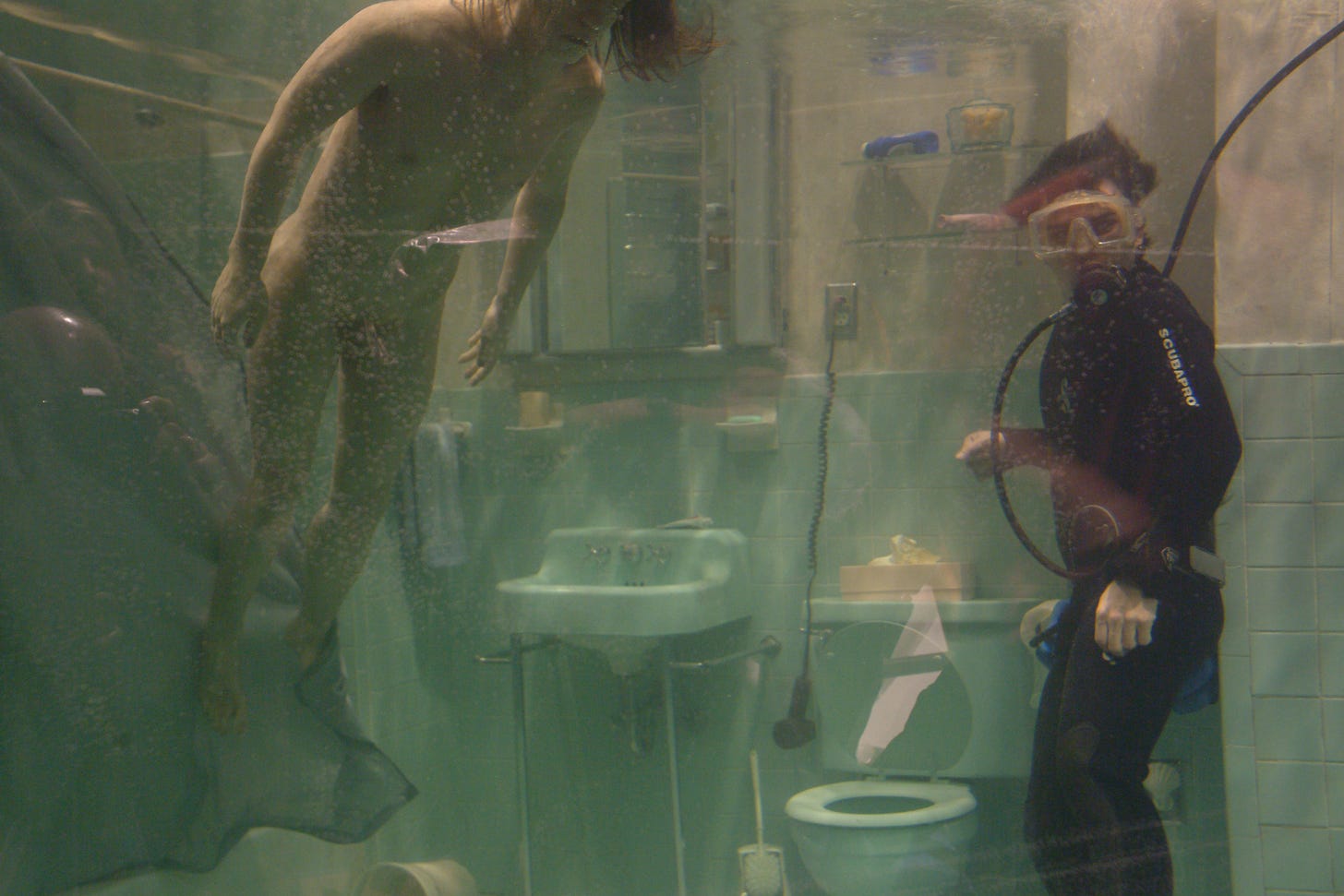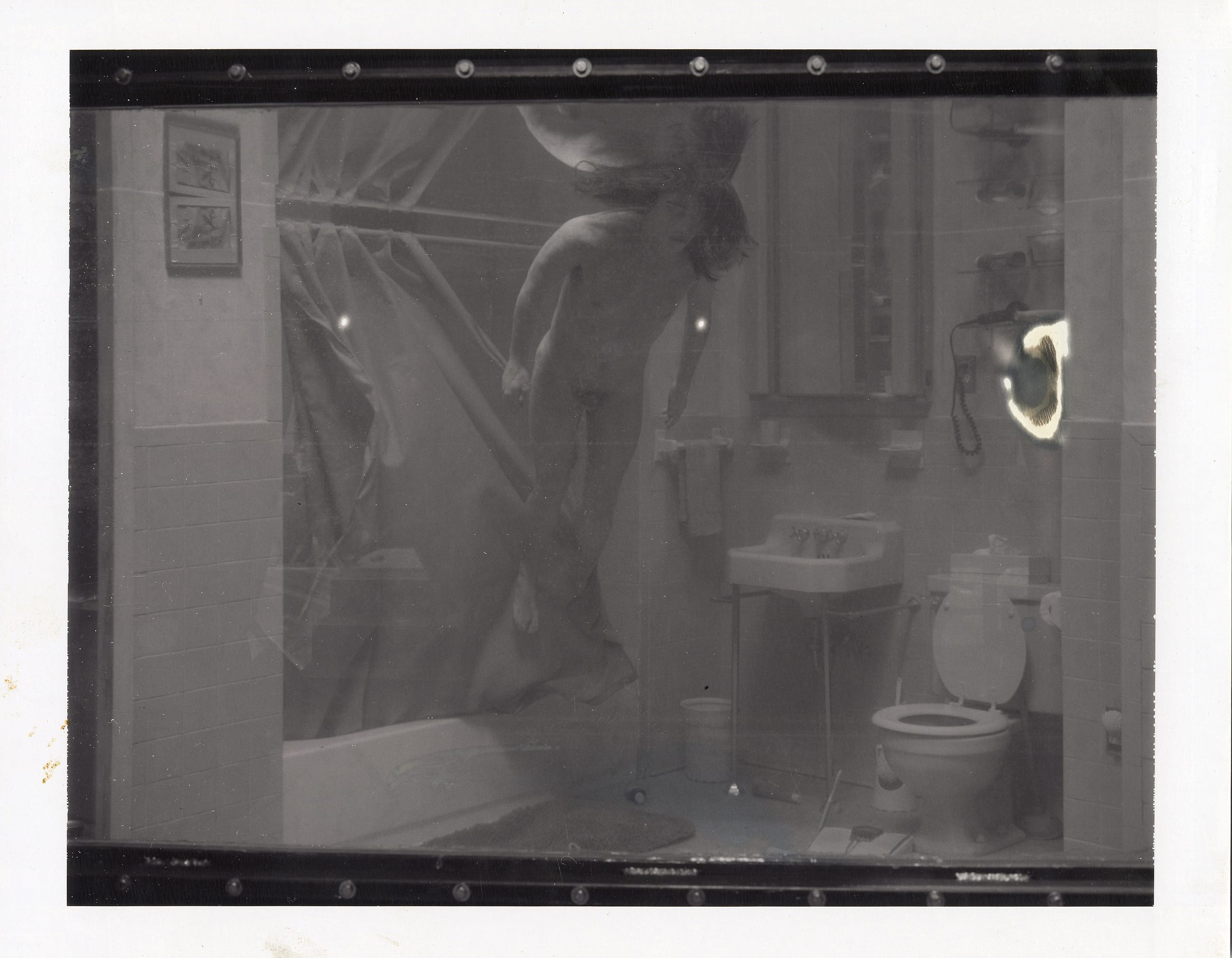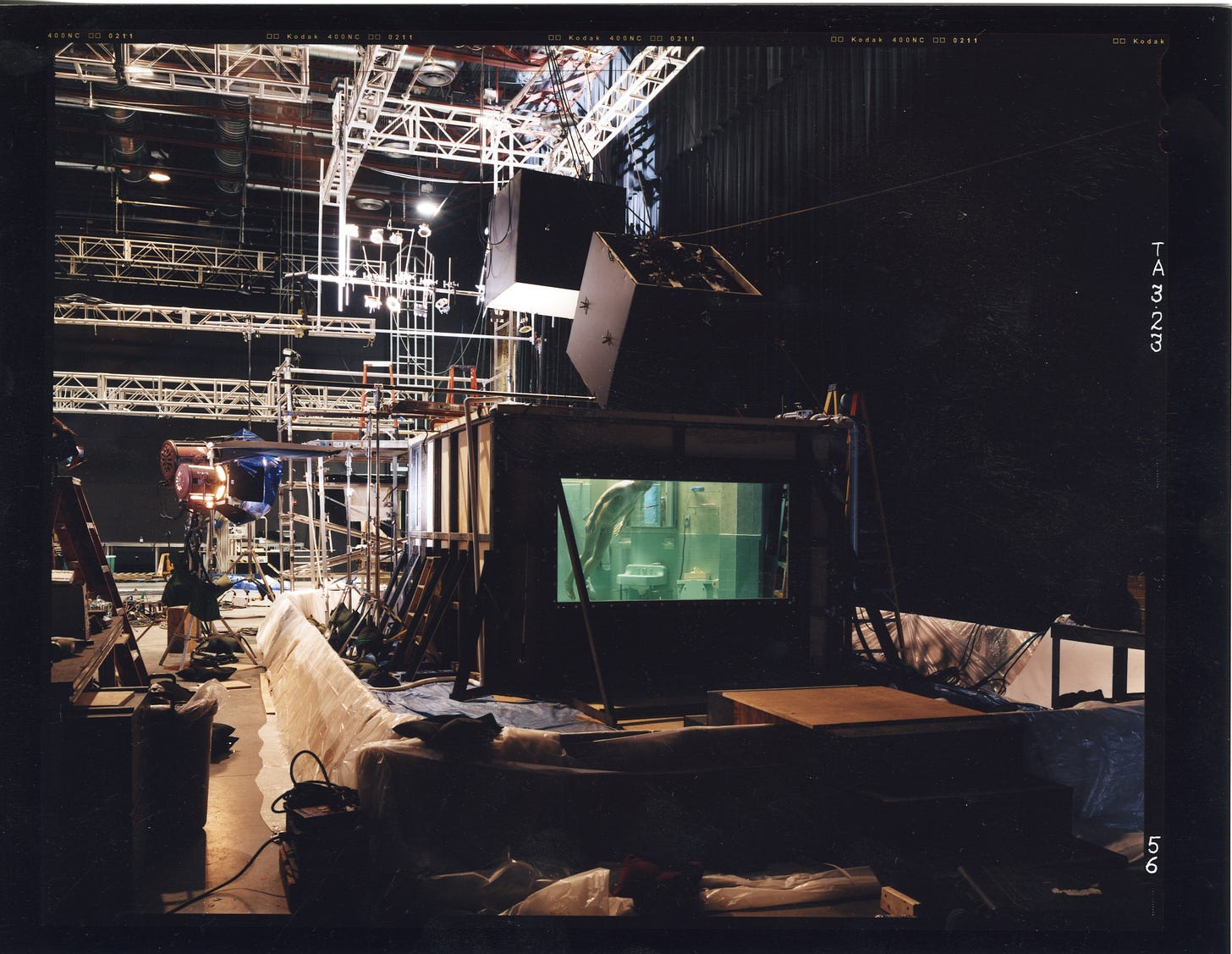OUTTAKE: THE TANK, 2005
Sometimes even the most complicated and well-orchestrated pictures get cut
IN 2005, I was halfway through the making of Beneath the Roses. The productions of that series were my most epic in terms of scale and scope, even to date. We were doing two or three productions per year, with a crew of around 50, closing down whole streets, and using dozens of lights on exteriors, while simultaneously building interior sets on the MASS MoCA soundstage. The soundstage work was more contained in some ways, but had its own grandiosity because of the level of design and construction involved, and the attention to detail we were afforded. I was able to really let the pictures go wherever they wanted, since we weren’t constrained to the practicality of real locations or spaces.
Most of the interior sets in the series are fairly ordinary in terms of the locations. They’re largely domestic spaces with quiet quotidien narratives, often contemplative and transcendent in some way. But there were some others that I didn’t wind up including that were more fantastical and theatrical. One such picture has come to be known simply as “The Tank,” unofficially. It was a monumental undertaking, and really executed as I wanted in every way — and probably the most ambitious picture I made during that time. But when all was said and done, I just didn’t feel it fit in with the larger arc of the series. So I cut it and it was never released.
The concept was playing off my Ophelia picture from the Twilight series, which I shot in 2001 on the same soundstage. I wanted to do another such scene with a domestic space and a floating figure, but this time completely submerged. I also wanted to have the camera’s point of view be underwater, instead of looking down from the surface. I worked with Carl Sprague, production designer, to sketch it out and create a tank where we could build a bathroom, fill it with water, and shoot through a clear window with the 8 x 10 camera.
We did many tests and studies along the way, at various stages of the build. This one set took weeks to execute and many carpenters, and scenic artists to engineer.
We brought in the head of a local museum aquarium to help create the exact quality and color of water that I wanted. I didn’t want it to feel murky or briny; I wanted it to be slightly abstract and magical, like floating in a dream. He created an appropriate filtration system to accomplish that.
The body cast we used was made by a company in Los Angeles that supplies realistic prop bodies for movies and television.
Looking back at this picture now, I appreciate it even more as a stand alone, something of a self portrait, or an out of body experience.
Editorial note: This piece was written by Juliane based on conversations and interviews she did with the artist.

